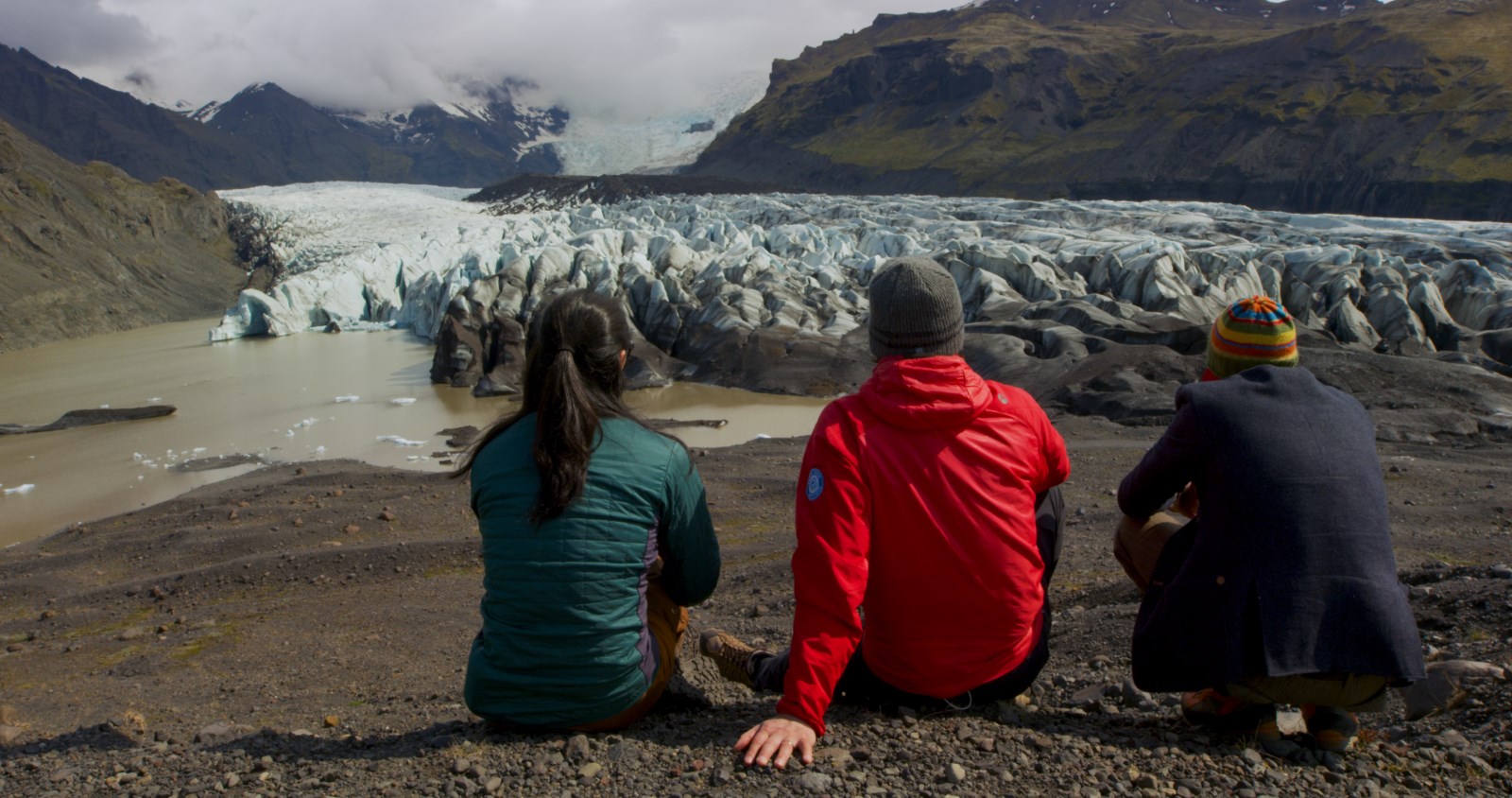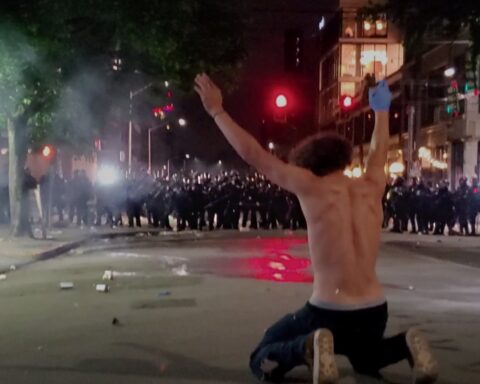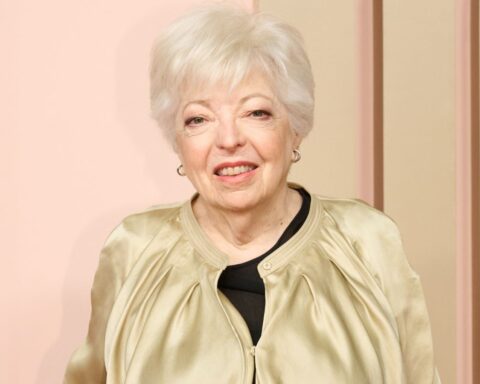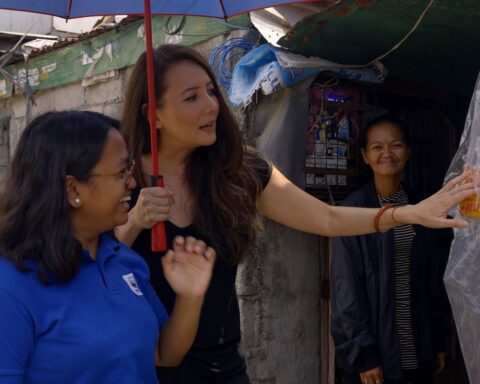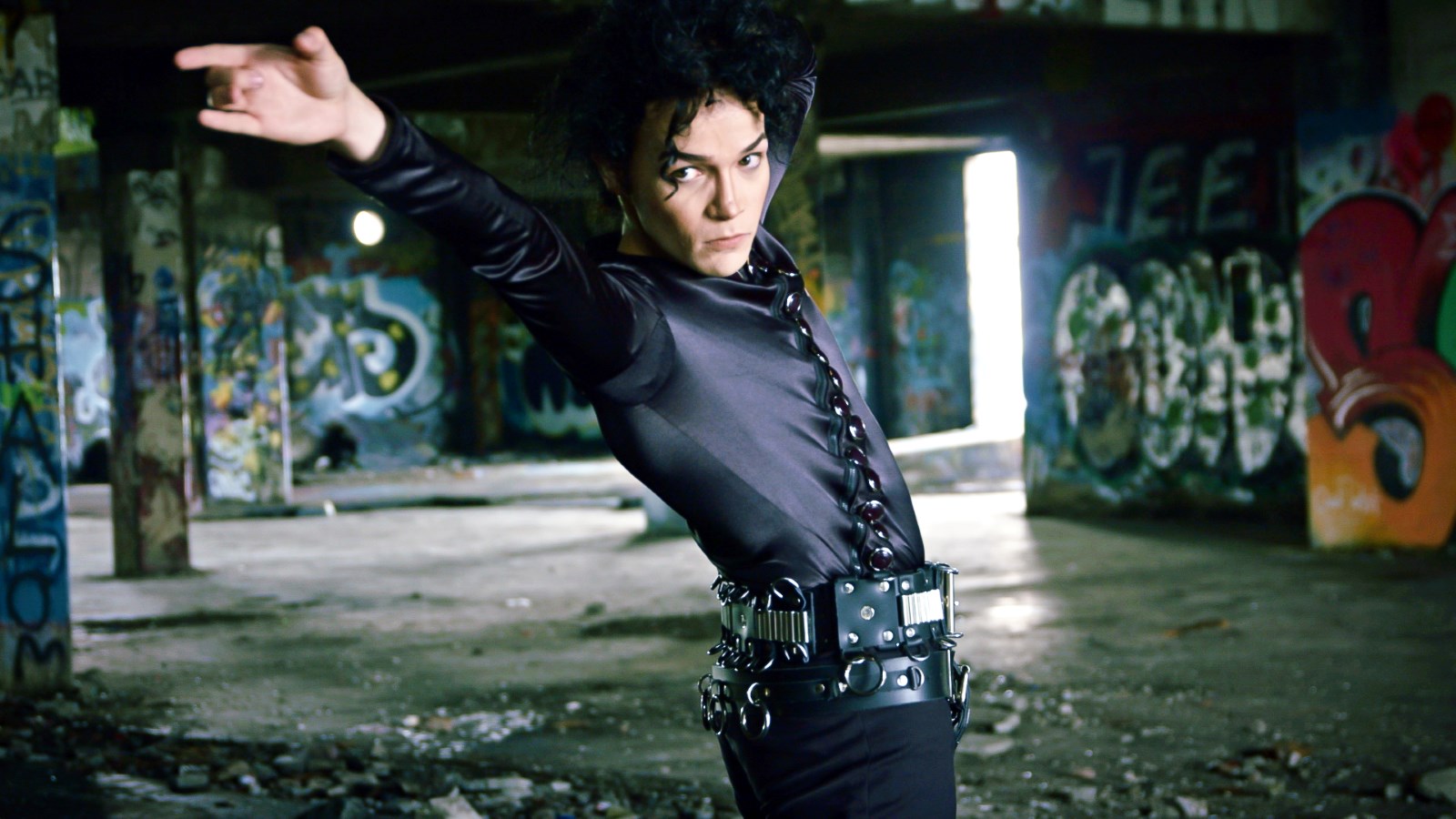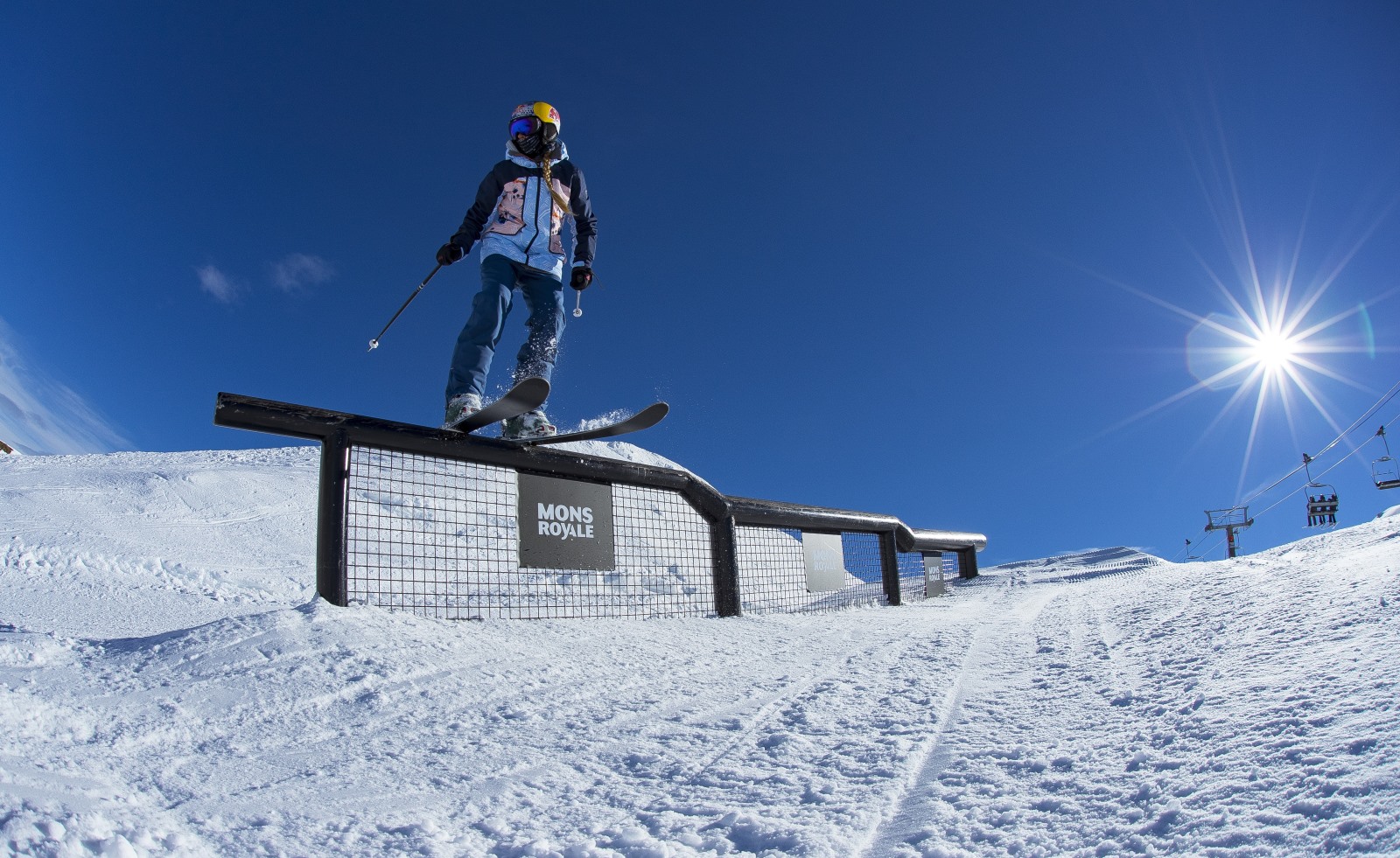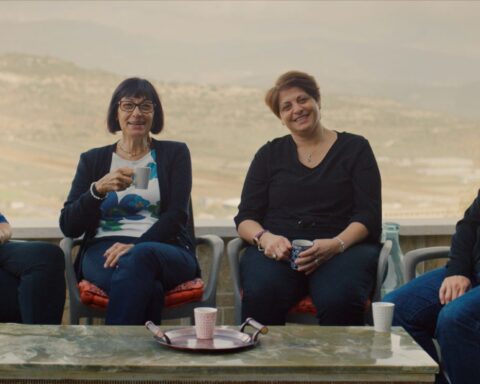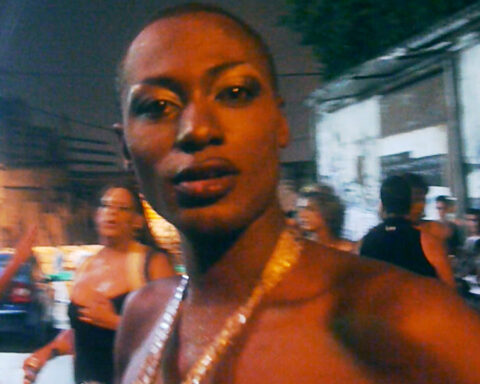Back in 2012, Jeff Orlowski documented famed photographer James Balog as he setup his Extreme Ice Survey, a series of remote cameras set to record the immediate effect of climate change on the world’s glaciers. With stunning visuals and pioneering use of time-elapsed photography, Chasing Ice served as direct evidence of the warming of the planet. Images showed millennia-old ice sheets radically transforming over just a few years, contributing to the rise of sea levels, and making manifest the way the world is undergoing fundamental transformation due to environmental changes.
Orlowski’s latest film, Chasing Time, is slightly more philosophical and ruminative. Directed in collaboration with Sarah Keo, the film sees Jeff and James return to Jakobshavn Glacier to remove the camera and close a chapter in both their work and their relationship. It’s a touching film about mentor and mentee, and manages in its compact running time to provide a rich portrait of their collaboration, additional stunning views of their otherworldly locations, and an even more open-eyed look at the catastrophic changes that have occurred over the last decades in this majestic environ.
We spoke to Jeff and Sarah prior to their film’s premiere at Hot Docs.

POV: Jason Gorber
JO-Y: Jeff Orlowski-Yang
SK: Sarah Keo
This interview has been edited for brevity and clarity.
POV: Chasing Coral was a companion piece to Chasing Ice, and this latest film is in conversation with both of them. Could you talk about what it’s like to be taking on the same aspect of environmentalism from different perspectives?
JO-Y: I think the environmental movement, my work as a filmmaker, and our team’s work as storytellers have tried to mirror where the environmental movement has been at for the last decade and a half. 17 years ago, when we started making Chasing Ice, and then onto Chasing Coral, we were really focused on how we prove that climate change is real. The science was being debated, and it was a time when the general public wasn’t as aware of the issue. What we were trying to do with the photography was to show visual evidence that climate change is, in fact, real, and is, in fact, happening. The science has been so confirmed, the evidence is there. Yes, there are still deniers, but we’re not trying to prove anything to the deniers anymore.
This project is much more about honoring the legacy of my mentor James, of the photography and the work that we’ve done together, and trying to put a piece out that recognizes and honours the end of our many years of work. This film is a testament to one man’s career and dedication to being an advocate for climate. We went in with a very different intention to show a human story with the glaciers in the background.
POV: Why a short and why not a feature?
JO-Y: That’s just what it needed to be. It just felt like a short. We debated going shorter, originally. We wanted this to be a 20 -minute update—this is where it’s at, this is where the glaciers are at—but Sarah, my co-director, helped tease out a personal story between me and James and a mentor story between the two of us and the group of people who had worked together for so long. We released any parameters in the edit room and we let the story unfold. This is where it landed.
POV: Sarah, you’re stepping into his territory, but you’re also wanting to bring your own voice while collaborating. Can you talk about what your introduction was to the previous projects, and how you brought a fresh perspective to it?
SK: I met Jeff and Larissa, his long time producing partner, when I was working at Sundance, and through watching their previous films. I was telling everyone they were my dream filmmakers to work with. As a shy and nervous person, I awkwardly approached them and was like, “Hey, I’d love to get to know you and how you got into this work.” They were kind enough to chat with me and bring me on to their team for Social Dilemma as a production coordinator. I had been on the team ever since and through the years.
When this opportunity came up and it seemed like it was time to make this film, Jeff asked me to be his co-director. We were chatting through what the story could be. It became apparent that there was at the centre a beautiful story of the mentorship between Jeff and James. That really was my role as co-director: making sure that Jeff was comfortable in front of the camera, to be himself, where he didn’t have to worry too much about the director role and could put on the subject hat. I led a lot of the interviews to help Jeff stay in that mindset. As an outsider, as a woman, I was able to enter this dynamic among these three men [the third being Chasing Ice’s Svavar Jónatansson] and help them to break down those emotional walls and barriers and to share a more vulnerable side of themselves that the public doesn’t always get to see, especially from someone like James.

POV: Can I be totally terrible here and say that means you were the “icebreaker”?
[Laughter.]
JO-Y: We’ll put that on Sarah’s next business cards.
POV: Jeff, would you admit that your other films broadly fall into the category that film critics like me would consider “advocacy” docs? They are docs that people, that you’re there to tell a story, but also it inevitably has that URL at the end that says if you want to save the world, this is what you’re going to do. It’s getting people engaged not only aesthetically, but politically. To Sarah’s point, this is an emotional film, this is a personal film, this is beyond what is happening on the planet—it’s what’s happening to you emotionally. How much of a shift did you find that as a filmmaker?
JO-Y: I broadly align with the framing around advocacy, as I think advocacy is an attempt and a hope to make the world a better place. I hope to use film and stories to accomplish that. In this case, when we as a team have been wrestling with what the climate movement needs right now, the climate movement doesn’t need more evidence of climate change. What the climate movement needs is more mentorship and more people coming in and wanting to engage, become passionate, and take part. In that sense, this film is also trying to be an advocacy film by building a bigger team of people who care about issues broadly. We close the film with this saying that was shared with me, which is that working on climate is not a sprint, nor is it a marathon: It’s a relay race. We all have to run our part, and then we pass the baton.
POV: But there’s got to be so many documentarians that also get burned out. How do you maintain the drive to hold the baton as you continue to run?
JO-Y: I just turned 40 this year, and, in some ways, but I think in a big way, the idea of mentorship has been a concept that helps me move forward with this work. If it felt like the burden was on my shoulders alone, then there’s no way I could solve this issue. One of my mentors, separate from James Balog, has been Jane Goodall. I met Jane Goodall when I was in high school and I’ve seen Jane lecture probably 50 to 100 times all around the world. Jane’s biggest mindset, I’ve learned from her, is that she sees her role on the planet as being one of inspiring others to take action. That is her personal life mission statement. She has inspired me to take action in a way where I hope this film inspires others to get involved and to take action.
POV: And Sarah, given your experience at Sundance, you’re aware of the didactic, dry, activist movie which is like what the music studios will do as a commercial for a band, but it’s for an environmental group. This film is much more subtle and elegant, and tied to deeper human connections. As the outsider coming in, did you have any hesitations? Are you cautious about falling into the generic tropes of yet another environmental activist doc?
SK: We just need more climate stories in general. We need more people to get involved, we need more people to tell their stories, we need greater stories of representation from communities all over the world, and so it is really important that we continue telling these stories. For me, personally, it was important for this story to end on a message of hope. A lot of us are feeling fatigue around the climate movement, around this work being so hard and taxing and, there is the sense of despair and paralysis sometimes. Sometimes you need a pause and have self-care, and so, for us, it was more about the human story at the centre of this, needing more stories about the humans behind the climate work, and behind the movement.
What I was trying to pull out of Jeff and James and the team, was how do we invite audiences to see themselves in the people behind the work and understand that we all have something to contribute? Whether it’s through art or music, or you can be a lawyer or a gardener, whatever your role is, everyone has something to offer.

POV: I know you are both way too nice for this, but what sets the Chasing films apart is that they are engaged in this form of engagement, of activism in a positive sense, without becoming didactic, without becoming one-dimensional. What are the pitfalls in that kind of filmmaking? What are the overt things that you avoid in making something that’s engaging?
JO-Y: We’re trying to not preach, ever. Preaching, whether to the choir, or to a skeptic, is still preaching and it only works in certain venues. It works in church because people are opting in for the preaching, because they want to go to be preached to. In this scenario, thinking about films and stories that we hope as storytellers and artists work very broadly and widely, I think one of the principles that we’ve been trying to follow is what’s the story and what’s the human story. How do you avoid it feeling like somebody is lecturing you? Nobody wants to be lectured to.
Sometimes, I think we just need a wake-up call on certain issues. I could totally see certain films, not just on climate but on other subjects, where a lecture-style format might be very effective today.
Something that we’ve been trying to do with all of our projects is to ask where the public is at on a particular issue. What stories might engage a wide audience to see or hear or to think about an issue, any issue, in a different way? We barely reference climate change in this movie at all. I think there’s one sentence about it. Everything else is much more about a team of people that have done this work to take pictures of glaciers for over 15 years. By leaning into that human story and the visuals of the landscape, it allows the work to speak for itself.
I have respect for the filmmakers who are trying to do advocacy [but] if we can lead audiences to that place where they can feel something emotionally, that’s a far greater success.
POV: Why did James’ camera need to come down now? His project finished, but why does one have to remove that camera? Why wouldn’t you simply replace the camera with another one, and you continue that mission?
JO-Y: We debated this, both in real life and in the edit room for quite a while. The reality is, in different places around the world, James passed the cameras off to other teams. At this camera in Iceland, it was James’s burden for all of these years, with him incurring the cost to personally go back out there and manage equipment and fundraise and maintain all of it. It was a huge physical, mental, emotional and financial burden. The removal is also part of a “leave no trace” philosophy, and wanting to honour the landscape. He felt that the cameras had done their jobs and had done their work for what he was committed to. There’s a lot of work being done to continue this legacy and to continue documenting landscapes all around the world. James is partnering with a lot of that too.
POV: Sarah, can you talk about just your personal reaction to being at this incredibly stunning place in the world, but also, recognizing that so much of what is beautiful about it is, not that it stops being beautiful, but that you can see, you can witness what has changed in Jeff and your collaborators’ lifetimes?
SK: I was just stunned, by the beauty of the landscape. That really was such a spiritual experience for me, being able to connect with nature and being at these remote locations especially with James and his own background in geomorphology and the way he’s able to describe the landscapes and the history, and find the details in the layers of the land.
Through working with Jeff and James, I got a deeper understanding of that in a geological timeframe. We’re just this little blip. Iceland changed the way that I view life. Watching these landscapes disappear was heartbreaking too. It was such a mix of emotions taking down the last camera. To be able to capture that moment, to capture these landscapes through Jeff’s stunning cinematography and to be able to put it on a big screen, and have audiences who might not be able to access these landscapes, or travel to Iceland themselves, it’s such a great way to experience it and see the devastation of watching these landscapes disappear.
POV: Could talk about just getting into the head space of capturing these images? You’re doing compositions in front of an award-winning National Geographic photographer. That must be occasionally intimidating.
JO-Y: When I was younger, 20-someting years old, fresh out of or still in college, and working with him, I just wanted to prove that I was worth having around. I did everything and busted my butt. I was doing a lot of editing for him too, and doing cinematography and everything else. There are a number of times when I’m getting a shot and he makes a comment or suggestion that this shot would really cut well with another one, or that I should compose it a different way. It’s always a balance between wanting to take that advice and see through my own eyes at the same time. There are a number of edits in Chasing Ice that, I don’t even think James knows it, but he suggested that specific edit. His advice is lodged in the back of my head. That’s a beautiful way of learning. It’s learning by doing.
This is what we tried to do for Sarah. I couldn’t have sat down and written a curriculum of what I would want to teach. It was like, “We’re shooting now. This is what you need to learn.” That’s been the beautiful part of learning. By stepping back and watching [James] look at the world and seeing him see what he’s looking for, that’s been one of my best modes of educating myself.




